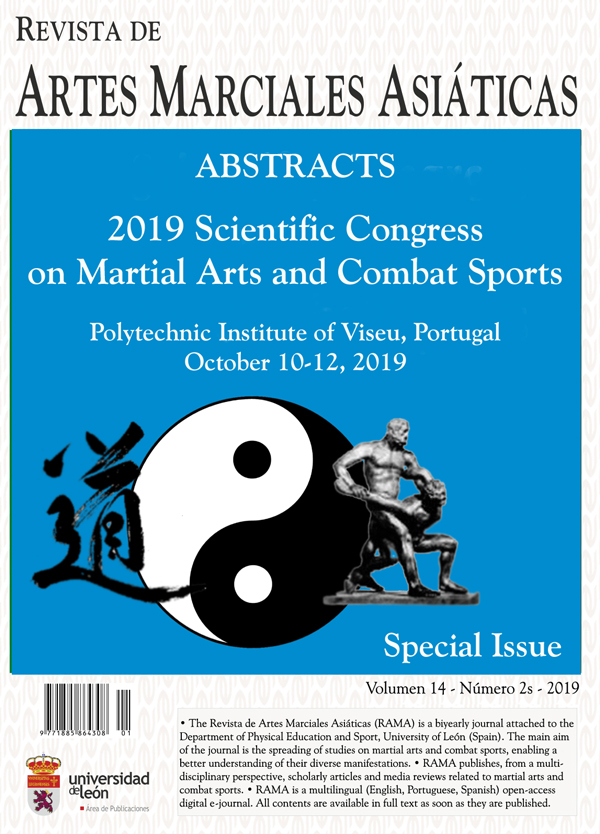The effects of a 6-week plyometric training on muscular strength performance in silat exponents
DOI:
https://doi.org/10.18002/rama.v14i2s.5976Palabras clave:
Malay sports, martial arts, combat sports, silat, sports trainingResumen
The aim of this study was to investigate the effect of 6-week plyometric training on muscular strength in young silat athletes. Thirty-four male silat exponents (Mage = 14 ± 3.22 years) were randomly assigned to a control or experimental group (n = 17 for each group). The experimental group participated in conventional silat workout routine three times a week for one-hour session plus plyometric training two times a week for one-hour session. The control group performed conventional silat workout routine three times per week for one to two-hours session. The one repetition maximum (1RM) squat test was used three times (pre-, mid- and post-test). Results revealed that muscular strength performance improved for the experimental group. This improvement was 9.16% between pre- and mid-test, 18.81% between mid- and post-test, and 29.7 % between pre- and post-test. Plyometric training was shown to be effective to improve maximum strength of young silat athletes.
Descargas
Métricas alternativas
Citas
Aziz, A. R., Tan, B., & Teh, K. C. (2002). Physiological responses during matches and profile of elite pencak Silat exponents. Journal of Sports Science & Medicine, 1(4), 147-155.
Chu, D. A. (1998). Jumping into plyometrics. (2nd ed.). Champaign, IL: Human Kinetics.
Hakkinen, K., Pakarinen, A., Alen, M., Kauhanen, H., & Komi, P.V. (1998). Daily hormonal and neuromuscular responses of intensive strength training in 1 week. International Journal Sports Medicine, 9(6), 422-428. doi: https://doi.org/10.1055/s-2007-1025044
Piper, T.J., & Erdmann, L.D. (1998). A 4 step plyometric program. Strength and Conditioning Research, 20(6), 72-73.
Shapie, M. N. M. (2011). Influence of age and maturation on fitness development, trainability and competitive performance in youth Silat (Doctoral dissertation). Cardiff University, Cardiff.
Singh, D.K. (2012). Effect of resistance training and plyometric training on explosive strength in adolescent male taekwondo player. International Journal of Behavioral Social and Movement Sciences, 1(2), 49-56.
Descargas
Publicado
Cómo citar
Número
Sección
Licencia
Derechos de autor 2019 Dahlia Al-Syurgawi, Mohamad Nizam Mohamed Shapie

Esta obra está bajo una licencia internacional Creative Commons Atribución-NoComercial-CompartirIgual 4.0.
Los autores que publican en esta revista están de acuerdo con los siguientes términos:
- Los autores ceden de forma no exclusiva los derechos de explotación (reproducción, distribución, comunicación pública, transformación) a la Universidad de León, por lo que pueden establecer, por separado, acuerdos adicionales para la distribución no exclusiva de la versión de la obra publicada en la revista (por ejemplo, alojarlo en un repositorio institucional o publicarlo en un libro), con un reconocimiento de su publicación inicial en esta revista.
- Este trabajo se encuentra bajo la Creative Commons Attribution-NonCommercial-ShareAlike 4.0 International License. Puede consultarse desde aquí la versión informativa y el texto legal de la licencia.
- Se permite y se anima a los autores a difundir electrónicamente las versiones pre-print (versión antes de ser evaluada) y/o post-print (versión evaluada y aceptada para su publicación) de sus obras antes de su publicación, ya que favorece su circulación y difusión más temprana y con ello un posible aumento en su citación y alcance entre la comunidad académica.











